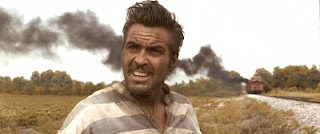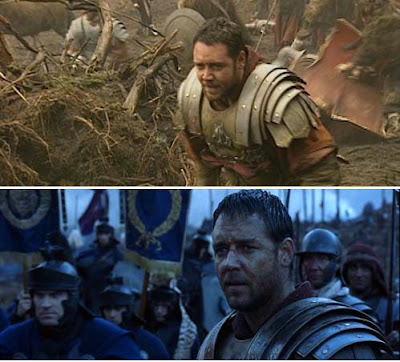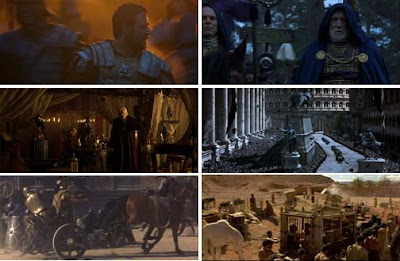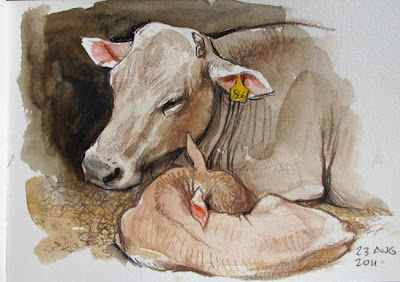When the Coen Brothers made the movie “
Oh Brother Where Art Thou” in 2000, they digitized the movie film, which made it possible to manipulate the colors within each scene, just as you can adjust the colors of a still photo in Photoshop.

It seemed revolutionary then, but it’s standard practice now. Each shot of a live action film is routinely enhanced or drained of color. This process is called “color grading” or “digital color timing.”

The top image shows the color palette that faced the cameras on location in southern England while filming the opening battle scene in
Gladiator, also from 2000. The lower image shows how the sequence appears in the film.
Sometimes the whole scene is pushed toward a given hue to suggest the cool of the night or the heat of the desert. But you can also pick out individual elements and shift their color wherever you want.

Unique artistic effects are possible that were never possible before. In this scene from "Sin City," a portion of the scene is made black and white, and another is brought into color.

Representative frames each scene are assembled into a chart called a “color script” or a “color bible,” where the director can see the color movement of the whole film in a single glance. Each of the sequences in
Gladiator is recognizable at a glance, just from the overall color scheme.
One popular technique recently has been to bring out the warmth of a face while cooling the background in the same shot. Todd Miro, a film editor, has
argued that the practice has been taken too far. The skin tones are out of key with everything else, and therefore look unnatural. He argues that such orange skin tones could never exist in such strongly blue environments without golden hour lighting.
LINKS
Wikipedia on Color Grading
Last still from "Transformers Two," from
The Abyss Gazes: "Teal and Orange: Hollywood Please Stop"
Book:
Color Correction Handbook: Professional Techniques for Video and Cinema









































